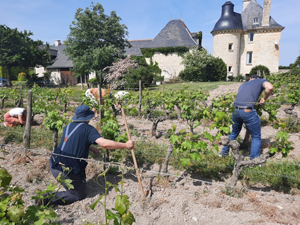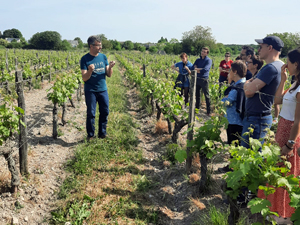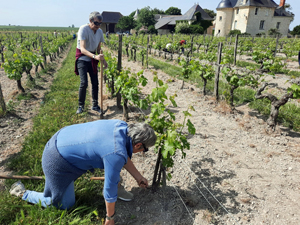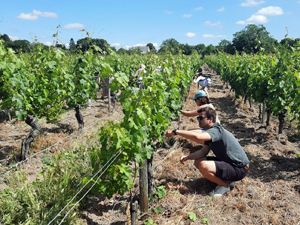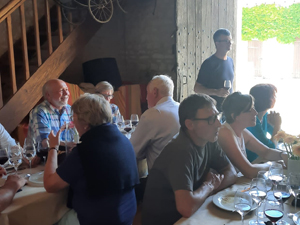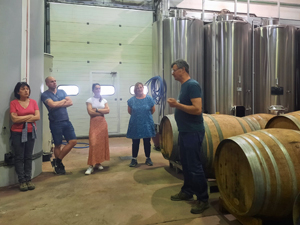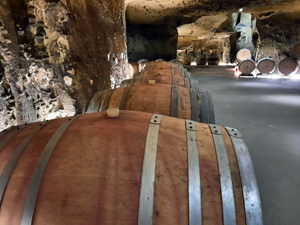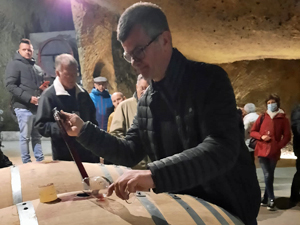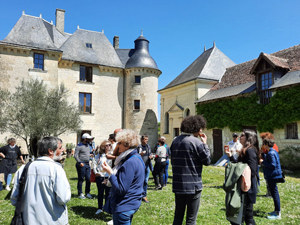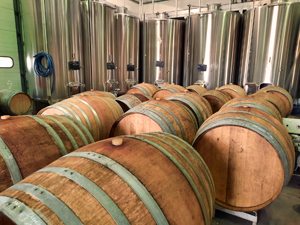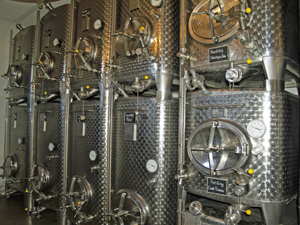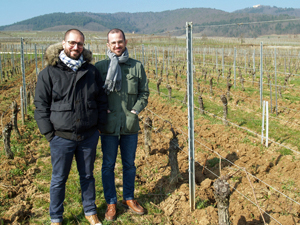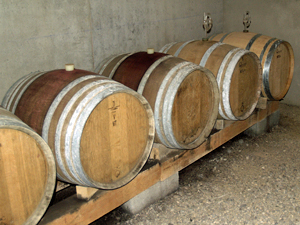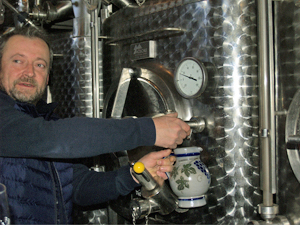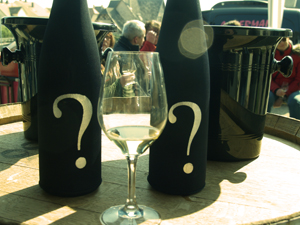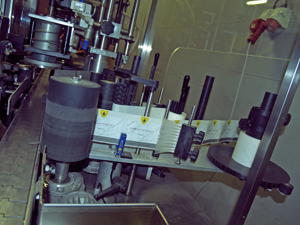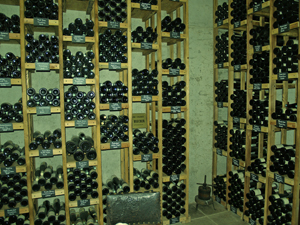We spent two great Harvest Experience Days on the 3rd and 10th September at Château de Jonquières, a magnificent family-run winery in the Terrasses du Larzac wine-growing region of Languedoc in the south of France. We were there with some clients of the Gourmet Odyssey Wine Experience who had come to get involved in harvesting the grapes and learn about how the grapes are turned into wine during the fermentation and maceration phases.
Charlotte and Clément, the young wine-making couple, are the 32nd generation of winemakers at the winery, welcomed us in the courtyard of the château over coffee. Smiles beamed from each of their faces, which maybe hid a little bit of stress that this crucial period of harvesting in the wine-making year inevitably brings!
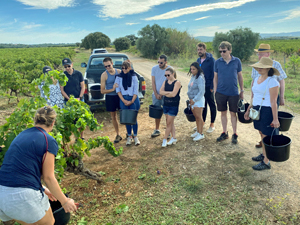
After a quick explanation of the winery’s history, the Terrasses du Larzac wine-growing region, a recap of the 2022 vintage so far, and an overview of the day’s agenda, we were equipped with a bucket and pair of secateurs. We then made our way through the vineyards to a nearby plot of Syrah vines. It’s important to pick the grapes early in the morning to preserve their full potential.
As we walked to the vines, Clément followed by tractor, pulling a trailer into which we would delicately put our harvest.
We were taught how to pick the precious grapes without damaging them or harming ourselves! Sometimes we had to remove some of the leaves in front of the bunches to be able to get to the grapes more easily.
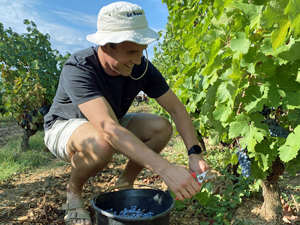
The harvest was generous and of great quality this year despite the very hot spring and summer. The vines were able to adapt to the climate and responded well to the treatment and care of the winemakers throughout the year. Some of our apprentice winemakers had learnt this first-hand during the Discovery Experience Days earlier in the year.
Once the buckets were full, we emptied them into the trailer.
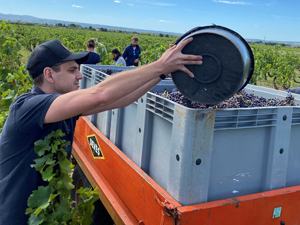
In didn’t take us long to realise that it’s a fairly difficult job. The positions we find ourselves in to pick the grapes can be uncomfortable at times, some rows are more abundant than others, and some harvesters are quicker than others... But the groups remained supportive of one another and we had lots of fun. In just over two hours, we had harvested the plot and had become real harvesters!
We had a quick refreshment break until Charlotte informed us that Clément was already ready to put out harvest into the vat.
We didn’t have any time to lose, and so we brought our precious gaped back to the winery to put them into the vat, but we had one last little job to do before then. We set about cleaning the buckets and secateurs with water so that they were nice and clean for the next day, and once again the team spirit shone through!
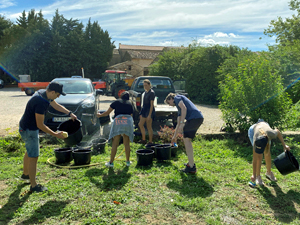
Clément carefully positioned the crates of grapes in front of the chai to then put them into the de-stemming machine.
This is in some ways the first step in making wine, and involves separating the grapes from the stems and any leaves that may have inadvertently fallen into one of the buckets. This avoids the wine from developing a bitter taste.
Once the grapes are freed from their stems, they are put into a stainless steel vat to start the fermentation process.
Charlotte then explained the differences in the process for white, red and rosé wines. For example, the red wines are kept in contact with the skins during the fermentation and maceration phase which lasts around 20 days, whereas the white grapes are immediately pressed before the fermentation phase starts to separate them from their skins.
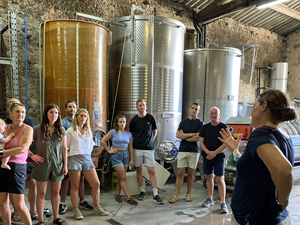
We tasted some of the grape musts that had been fermenting for 10 days, and Charlotte suggested that we put our ears to the vats to listen to the effervescence of the fermentation.
It was then time for lunch, and so we made our way back into the shade of the courtyard to taste 5 of the winery’s organic wines over lunch which had been prepared by a local caterer. We took the opportunity to ask the winemakers lots of questions about a wide range of topics such as their way of life, their philosophy of being organic, and the differences between the wine that we had tasted.
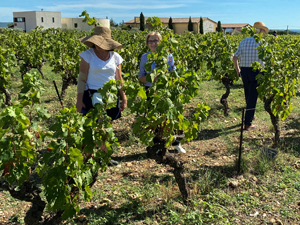
After lunch, we went to visit our adopted vines. After a short walk through the village of Jonquières, we arrived at the vineyard where our vines are located, and spent a few minutes metting our vines, and taking some photos of them.
We then returned to the chateau to bring the day to a conclusion, and collect a few bottles of wine to take home with us and share with friends and family.
We look forward to welcoming you back to the winery next year for one of the Vinification Experience Days!



